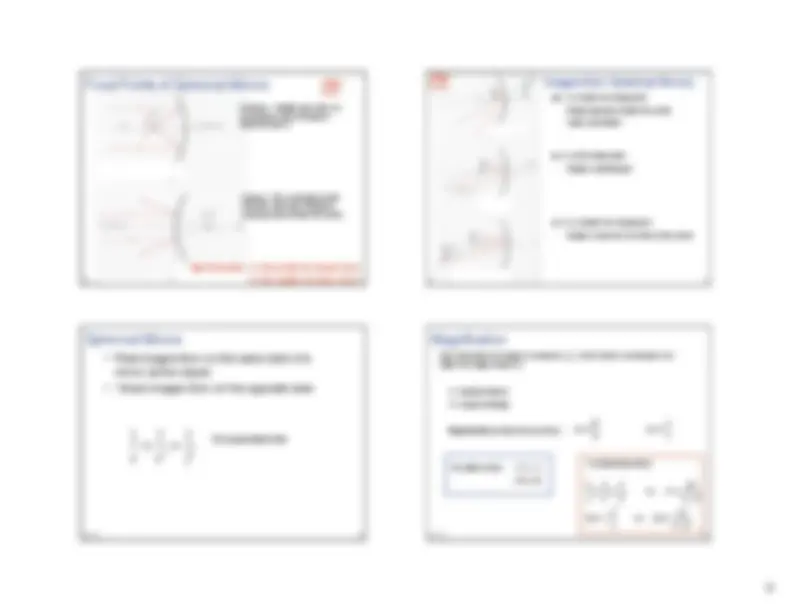





Study with the several resources on Docsity

Earn points by helping other students or get them with a premium plan


Prepare for your exams
Study with the several resources on Docsity

Earn points to download
Earn points by helping other students or get them with a premium plan
Community
Ask the community for help and clear up your study doubts
Discover the best universities in your country according to Docsity users
Free resources
Download our free guides on studying techniques, anxiety management strategies, and thesis advice from Docsity tutors
A set of lecture notes covering various topics in optics, including total internal reflection, polarization, and geometric optics. The notes discuss the concepts of incident, reflected, and refracted rays, as well as the properties of unpolarized and polarized light. The document also includes formulas for the brewster angle and the calculation of the intensity of light passing through two polarizers.
Typology: Slides
1 / 5

This page cannot be seen from the preview
Don't miss anything!




4/11/12 1
2! 1!^ !
Text Reference: Chapter 32.1 through 32. 4/11/12 3
4/11/12 4
I = I 0 ! I 1 = I 2 =
TWO polarizers produce LP light. What is the intensity?
4/11/12 5
4/11/12 6
partially polarized
Polaroid sun glass: eliminates glare If i = B, then reflected light will be fully polarized. i + B = 90o n 1 sin B = n 2 sin(90- B) n 1 sin B = n 2 cos B B = arctan (n 2 /n 1 ) n 1 ~ 1 B = arctan (n 2 ) Brewster’s Law (1812) Brewster Angle At B light has only perpendicular components. 4/11/12 7
4/11/12 8
1^ r
4/11/12 13
Concave: Parallel rays close to central axis reflect through a common point F. Convex: The extensions of the reflected rays pass through a common point behind the mirror. Sign Convention: r & f are positive for concave mirror. r & f are negative for convex mirror. 4/11/12^14 Images from Spherical Mirrors (b) O at the focal point: *image is ambiguous (a) O is inside the focal point: *image appears behind the mirror *same orientation (c) O is outside the focal point: *image is inverted & in front of the mirror
4/11/12 15
4/11/12 16
Size of an object or image is measured to the mirror’s central axis & is called the image height, h’. h - height of object h’ - height of image Magnification produced by a mirror: m^ =^ h ' h m = s ' s For Spherical mirror: 1 s
1 s ' = 1 f ⇒ s ' = fs s − f m = − s ' s ⇒ m = − f s − f For plane mirror: s ' = − s m = + 1
4/11/12 17
Use with next slide. 4/11/12 19
For concave mirrors: You can graphically locate the image of any off-axis point of the object by drawing a ray diagram with any two of four special rays through the point:
Mirror Type Object Location Image Location Image Type Image Orientation Sign of f r s’ m Plane Anywhere Opposite side of mirror from object Virtual Same orientation as object Concave Inside F Opposite side of mirror from object Virtual Same orientation as object Concave Outside F Same side as object Real Inverted Convex Anywhere Opposite side of mirror from object Virtual Same orientation as object 1 s
1 s ′ = 1 f M = − s ′ s